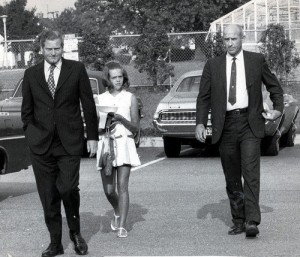Pratt’s chapters 2-4 explains the long slow struggle the public school system in Richmond experienced regarding desegregation after the Brown decision. The passive resistance movement in Richmond created the Pupil Placement Board on December 29, 1956. The board released its role and mission statement communicating that “no child can be legally enrolled in the public schools of the Commonwealth of Virginia until an application has been filed in his behalf, unless he remains in the school in which he has enrolled prior to December 29, 1956,” and that “in the event there is a refusal on the part of the parent or legal guardian of the pupil to file an application in the pupil’s behalf, at that moment the pupil is no longer legally enrolled, and should not be allowed to further attend the public schools of Virginia.” In effect the Pupil Placement Board arbitrarily enrolled students based on race and was another tactic used by the passive resistance movement to keep Richmond public schools segregated. The response from the African American community formed “child care units” by organizing church officials, parents, teachers, and post office workers to volunteer for looking at the children. Oliver Hill would enter the picture realizing the major challenge the Pupil Placement Board would be in overcoming desegregation in the Richmond Public Schools. However, the first successful legal battle mandated that two black students be admitted to all white schools, but this would foreshadow a slow pace of progress toward desegregation. Another problem still were the residential segregation policies that kept blacks closer to black schools in their neighborhood, undermining any hope black parents had for sending their kids to better all white schools. The Virginia moderates cultivated the fears of white residents and instituted a policy of conversion that would change a white school to a black school and vice versa depending on the demographics of the school. The Bradley v. Richmond School Board in 1961 was the first time the court’s had reprimanded the school board for not honoring integration policies.
Then we see in the spring of 1963 a victory toward desegregation in which a court order required the school board to eliminate the feeder school system and dual attendance zones. This would lead to the School Board’s response with the “freedom of choice” policy that would bring eventually take them to the Supreme Court. During this time the Civil Rights Act of 1964 would be passed, adding to the desegregation movement. The Supreme Court finally made a ruling regarding the freedom of choice policy was inadequate in honoring desegregation on the grounds that it didn’t include teacher placement, transportation, and left out other key components.
In all, the battle for integration took over 17 years, giving way to resegragation through the use of multiple tactics involving white flight, restrictive covenants, and white absenteeism. Do you think that the NAACP should have gone after residential segregation prior to focusing on integrating schools, and if they did what do you think the affect would have been on the student’s educational and social experiences ?

